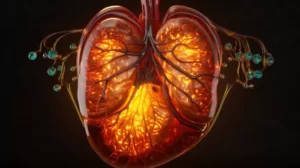In a previous article, we explored liver function, detoxification, and the vast exposure we all have to environmental chemicals that are directly linked to chronic disease. In this piece, we will discuss liver serum tests and how to monitor your liver function without blood tests. Next week, we’ll examine what you can do to keep your liver in optimal health.
Liver Function Versus Liver Function Blood Tests
Many people believe their doctors can test blood for liver function; they are often mistaken. Blood tests for the liver don’t indeed show its function; they reflect the severity of damage or disease. As a result, they are late at uncovering disease. These blood tests are called AST (SGOT), ALT (SGPT), alkaline phosphatase, LDH, bilirubin, and GGT.
Here’s what each blood test checks for:
- AST/SGOT (aspartate aminotransferase): An enzyme found in body organs such as your heart, skeletal muscle, kidney, brain, pancreas, spleen, lungs, and liver. When these organs are damaged or irritated, AST is released into the blood, causing serum levels to rise.
-
ALT/SGPT (alanine aminotransferase): An enzyme primarily found in liver cells, but also found in kidney cells. When both ALT and AST are elevated, it is a strong indication that the liver has been damaged due to a problem like viral hepatitis or alcoholism.
-
Alkaline phosphatase: An enzyme primarily found in the liver and bone tissues. Serum levels are much higher in young people.
-
LDH (lactate dehydrogenase): An enzyme with subtypes (isoenzymes). LDH-4 and LDH-5 are primarily found in the liver and skeletal muscle.
-
Bilirubin: The yellow-green pigment found in bile. It is formed when hemoglobin (the pigment protein of red blood cells that carry oxygen to tissues) breaks down. Too much bilirubin may mean that excessive red cells are being destroyed, or that the liver is incapable of removing bilirubin from the blood.
-
GGT (gamma glutamyl transferase): A liver enzyme whose elevation reflects acute liver damage, biliary tract obstruction, alcohol-induced liver disease, or viral hepatitis.
As you can see, elevated levels of these tests don’t mean your liver is starting to slow down; it means your liver has already been damaged or is nearing total failure.
Causes Of Liver Slowdown
Less common causes for declining liver function include viral hepatitis, multiple prescription medication use, autoimmune liver disease, and alcoholism. However, liver function is most often a function of lifestyle.
When you consistently consume caffeine, alcohol, processed food, artificial sweeteners, and chemicals in processed food, these substances negatively affect your intestinal lining over time. The condition called “leaky gut” develops, and molecules pass into your blood that should not get past the intestinal wall. This sets up an autoimmune inflammation response that burdens your liver. Added to this burden are the many environmental chemicals to which we are all exposed.
The body produces antioxidant nutrients such as glutathione to detoxify harmful substances in a series of complex chemical reactions. Foods high in antioxidant nutrients support this process and protect your liver.
Evidence That Your Liver Is Suffering
When your liver falters, you don’t experience an ache or have skin that turns yellow with jaundice. Instead, you usually experience more subtle indicators of sluggish liver function.
Blood tests can’t reveal a faltering liver early in the process because no tests can detect this at an early stage. Signs and symptoms of a liver beginning to struggle include:
- Increases in (bad) LDL cholesterol, decreases in (good) HDL cholesterol, and elevation of triglycerides. These are all linked to a slowdown in the liver’s ability to metabolize fats. The result is usually high blood pressure or cardiovascular disease and may eventually lead to a heart attack or stroke. This is also accompanied by sugar cravings, hypoglycemia, diabetes mellitus, and insulin resistance. The classic example is what is seen and known in conventional medicine as “fatty liver disease.” It is the most common cause of chronic liver disease in the United States, striking up to 20 percent of adults. Over time, this enlarged fatty liver can develop into cirrhosis, liver failure, or even liver cancer.
-
External symptoms of slowing liver function include a coated tongue, bad breath, red palms and soles, a flushed facial appearance or excessive facial blood vessels, acne or rosacea, yellowish conjunctivae on the eyes, brownish blemishes on the skin (often called liver spots), and itching skin, even without a rash.
-
Digestive problems that include gallstones, gallbladder disease, difficulties with fatty foods or alcohol, indigestion, reflux, nausea, constipation, and irritable bowel syndrome.
-
Depressed mood, anger, irritability, “foggy brain,” overheating, and headaches with nausea.
-
Immune dysfunction, such as allergies, hay fever, asthma, hives, sensitivities to chemicals and many foods, autoimmune diseases, chronic fatigue syndrome, fibromyalgia, recurrent viral infections, and frequent bacterial or parasitic infections.
-
Menopausal symptoms or premenstrual syndrome symptoms that are unusually severe or side effects from hormone replacement therapy.
All of the above should give you a better understanding of how your liver function relates to many signs and symptoms of illness. In our next article, we’ll discuss what you can do to achieve optimal liver health for overall better health and well-being.



![8 Simple Rules to Refresh Your Body with a Healthy Cleanse [See Pictures]](https://naturalhealthreserve.com/wp-content/uploads/2024/01/8-rules-healthy-cleanse-slideshow-300x168.webp)